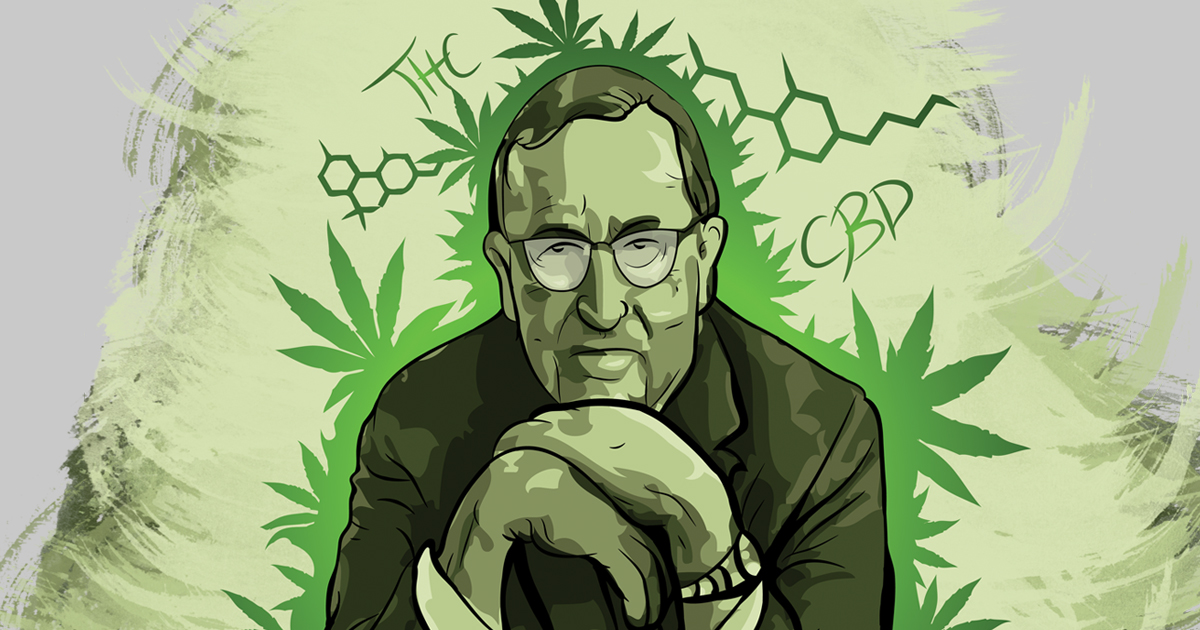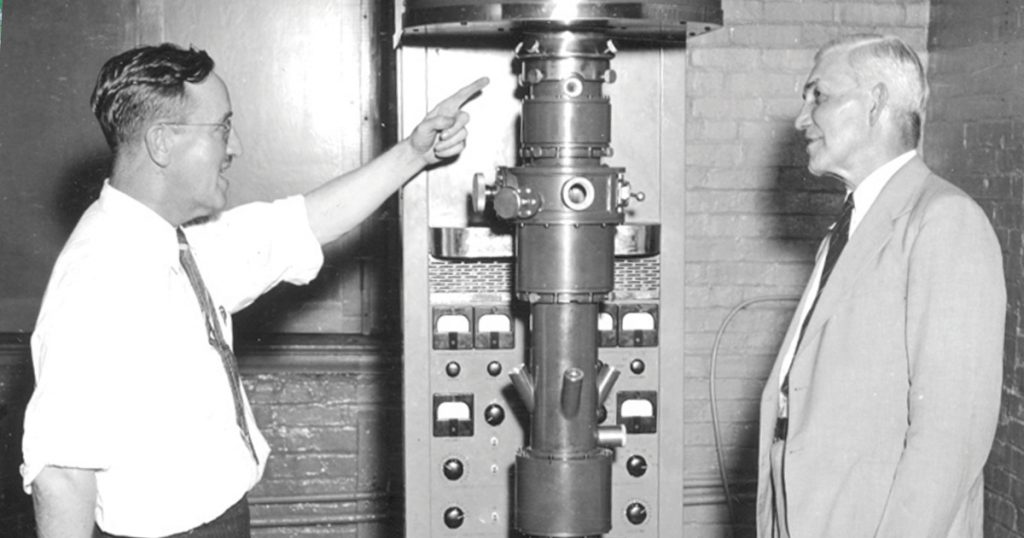U.S. Chemist Roger Adams Isolated CBD 75 Years Ago

The name most associated with cannabis science is generally Israeli chemist Raphael Mechoulam, who’s credited with first isolating and identifying THC. But given the current CBD craze, there’s another figure who should receive his due: American chemist Roger Adams, who first isolated cannabidiol. And, by some accounts, he even has a claim to being the person who initially identified its psychoactive cousin, THC.
In addition, Adams grappled with the role of science—and its misuses—in war and totalitarianism during the great world political upheavals in the early 20th century.
A true Boston blue-blood and direct descendant of President John Adams, the precocious scion entered Harvard in 1905 at age 16. In 1913, he travelled on a fellowship to Germany, the world leader in chemistry at that time, and studied at Berlin’s prestigious Kaiser Wilhelm Institute. He returned to the U.S. to take a post at the University of Illinois at Urbana-Champaign just as World War I was breaking out. For the first but not the last time, events on the global stage had an impact on his life, career and research.
In 1917, Adams took a position with the National Research Council in Washington, DC and its associated Chemical Warfare Service. Germany was then notoriously using poison gas in the trench warfare of Europe. Adams studied this with an eye toward developing prophylactics to gas attacks—and potentially deterrents in the capacity to retaliate in kind. Ironically, the expertise he learned in Germany was now being put to use for the war effort against Deutschland. Even after the war, Adams remained close to the then-forming national security establishment, which also had an impact on what would be his life’s most important scientific work.
Roger Adams’ Cannabis Research Commences
In 1939—just two years after marijuana was banned by Congress—Adams received a Treasury Department license to work with cannabis oil at his lab in Urbana-Champaign and presented a paper to the National Academy of Science on “The Chemistry of Marihuana.”
The next world war also broke out that year, although the U.S. wouldn’t become involved until after the Pearl Harbor attack in 1941. The national security establishment was clearly taking a keen interest in Adams’ work. In 1942, the newly formed Office of Strategic Services, the wartime predecessor of the CIA, drew on Adams’ research in its quest for a “truth serum.” Cannabis was administered to U.S. soldiers and also to scientists working on the Manhattan Project—the super-secret mission to develop the atomic bomb—but produced negligible results.
Marijuana’s newly illegal status made this research controversial. In his profile of Adams in No Boundaries: University of Illinois Vignettes (2004), Ronald Doel relates how the esteemed chemist was publicly dressed down by Harry J. Anslinger, the anti-pot zealot who was the crusading figure behind the “reefer madness” of this era.
In 1942, Roger Adams (left) won a patent for his method of isolating CBD and was also the first researcher to identify THC.
As commissioner of the Federal Bureau of Narcotics, Anslinger was the nation’s first Drug Czar. And since Adams’ research was being overseen by the bureau, Anslinger apparently perceived him as having a bit too much enthusiasm for his work. After Adams reportedly let slip in mixed company about the “pleasant effects of the use of this drug,” Anslinger publicly scolded him. “In my opinion, this drug is bad for human consumption and should be painted so,” he lectured.
In 1940, Adams was appointed to the National Defense Research Committee to assist in the war effort, but FBI Director J. Edgar Hoover suspected him of being a Communist sympathizer and blocked Adams’ appointment for several months due to his membership in the Lincoln’s Birthday Committee for Democracy and Intellectual Freedom, a body of academics opposed to Nazi pseudoscience and “race” theories. Adams was what would later be called a “premature anti-fascist.”
With the U.S. and USSR allied in World War II, anti-Communism was (for a while) de-emphasized, and Adams eventually got his security clearance. In 1942, he started the Illinois chapter of Russian War Relief, an organization established to support Uncle Sam’s wartime ally.
Adams Synthesizes CBD, Identifies THC
From a scientific standpoint, Adams’ most important work was his cannabis research in the early 1940s when he identified and synthesized cannabidiol (CBD) and cannabinol (CBN). In 1942, he won a patent for his method of isolating CBD. Adams was also the first researcher to identify tetrahydrocannabinol (THC) and published 27 studies on cannabis in the American Journal of Chemistry.
But Adams never actually isolated THC directly from the plant; instead, he synthesized it in the lab by tweaking the molecular structure of other cannabinoids, principally CBD. Adams apparently had been looking for the psychoactive cannabinoid; he knew it had to exist and had a good idea of its molecular makeup, but never actually identified it in the plant, apparently because the technology later used by Mechoulam wasn’t available to him back in the ’40s.
While Mechoulam is generally credited with isolating THC at the Hebrew University in Jerusalem in 1964 and giving the compound its name, Adams produced THC analogs in his laboratory some 20 years earlier and is said to have “inferred” the existence of the molecule in the cannabis plant. Mechoulam confirmed Adams’ discovery by using a nuclear magnetic resonance spectrometer.
According to hightideventures.com, “The isolation of delta-9-tetrahydrocannabinol as the primary psychoactive constituent in cannabis was first done by Wollner, Levine and Lowe in 1942. This followed the work of Roger Adams. Since then, (THC) has become the most widely studied cannabinoid.”
After Adams reportedly let slip in mixed company about the “pleasant effects of the use of this drug,” the nation’s first drug czar, Harry J. Anslinger, publicly scolded him.
In 1944, «The La Guardia Report on the Marihuana Problem» acknowledged Adams’ work: “We are indebted to Dr. Roger Adams at the University of Illinois and to Dr. H. J. Wollner, consulting chemist of the U.S. Treasury, who supplied some of the active principles of marihuana which were used in the study.”
The post-war era saw the pinnacle of Adams’ embrace by the foreign policy establishment. In 1945, he returned to Germany as an advisor to General Lucius Clay, administrator of the U.S. occupation there. Adams’ special mission was to oversee the reconstitution and de-Nazification of Germany’s scientific establishment. In 1947, he was sent to U.S.-occupied Japan with a similar mission.
Adams subsequently returned to Illinois, where he remained until his death in 1971. In 1958, the year after his retirement, the American Chemical Society established the prestigious Roger Adams Award in honor of his work.
He also developed the “Adams Scale” to measure the potency of cannabinoids; it’s still in use by researchers today. Although CBD’s multifarious applications would only become apparent decades later, Adams noted its analgesic effects in the ’40s.
Roger Adams repeatedly risked his career and position both for his cannabis research and his political ideals, standing up to the forces of intolerance in a very paranoid age.
RELATED
10 Questions with Project CBD’s Martin A. Lee
Joy Beckerman: Hemp Industries Association Evangelist
Freedom Leaf FAQ: 16 Questions About Hemp and CBD
This article appears in Issue 34.


